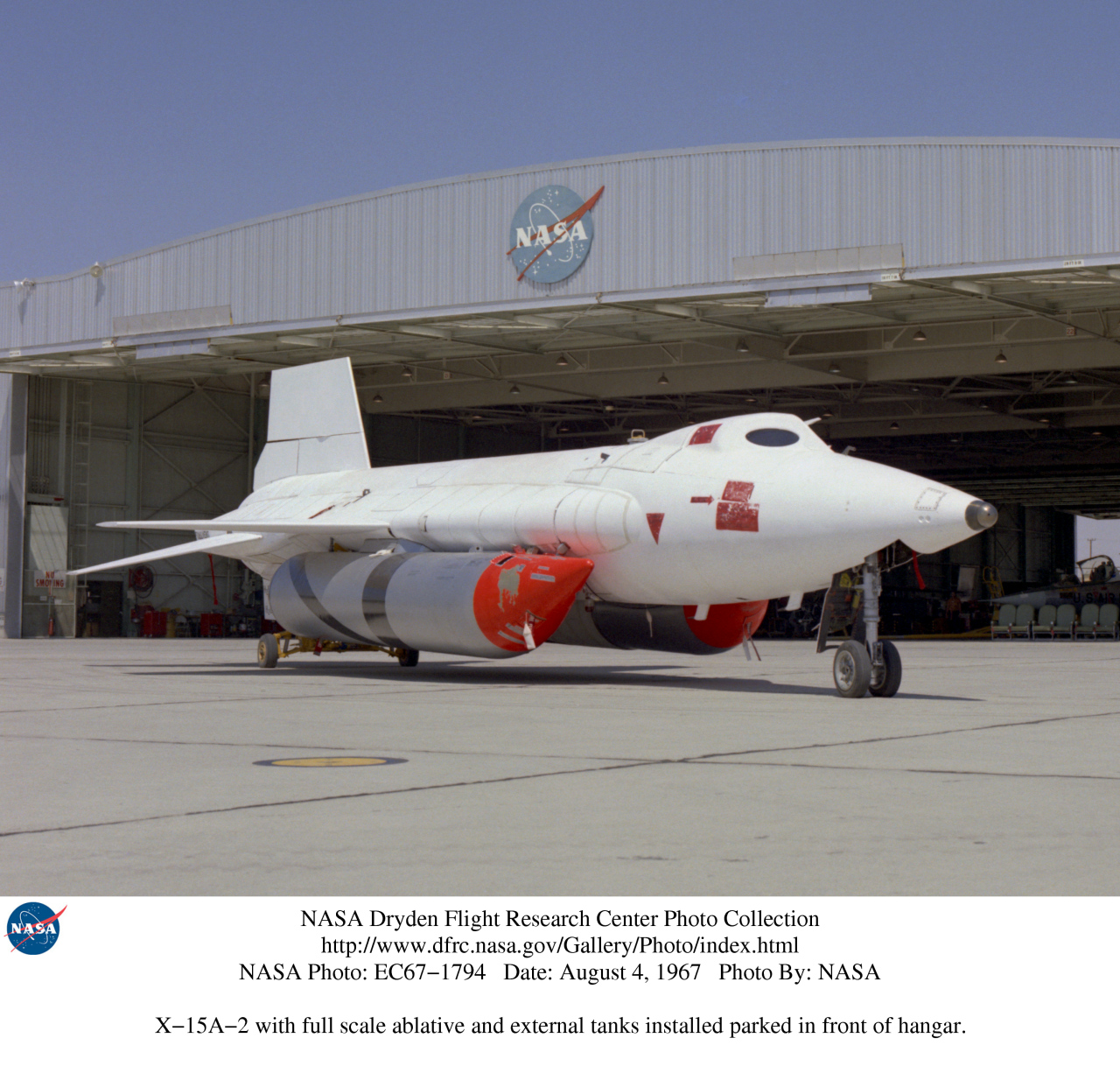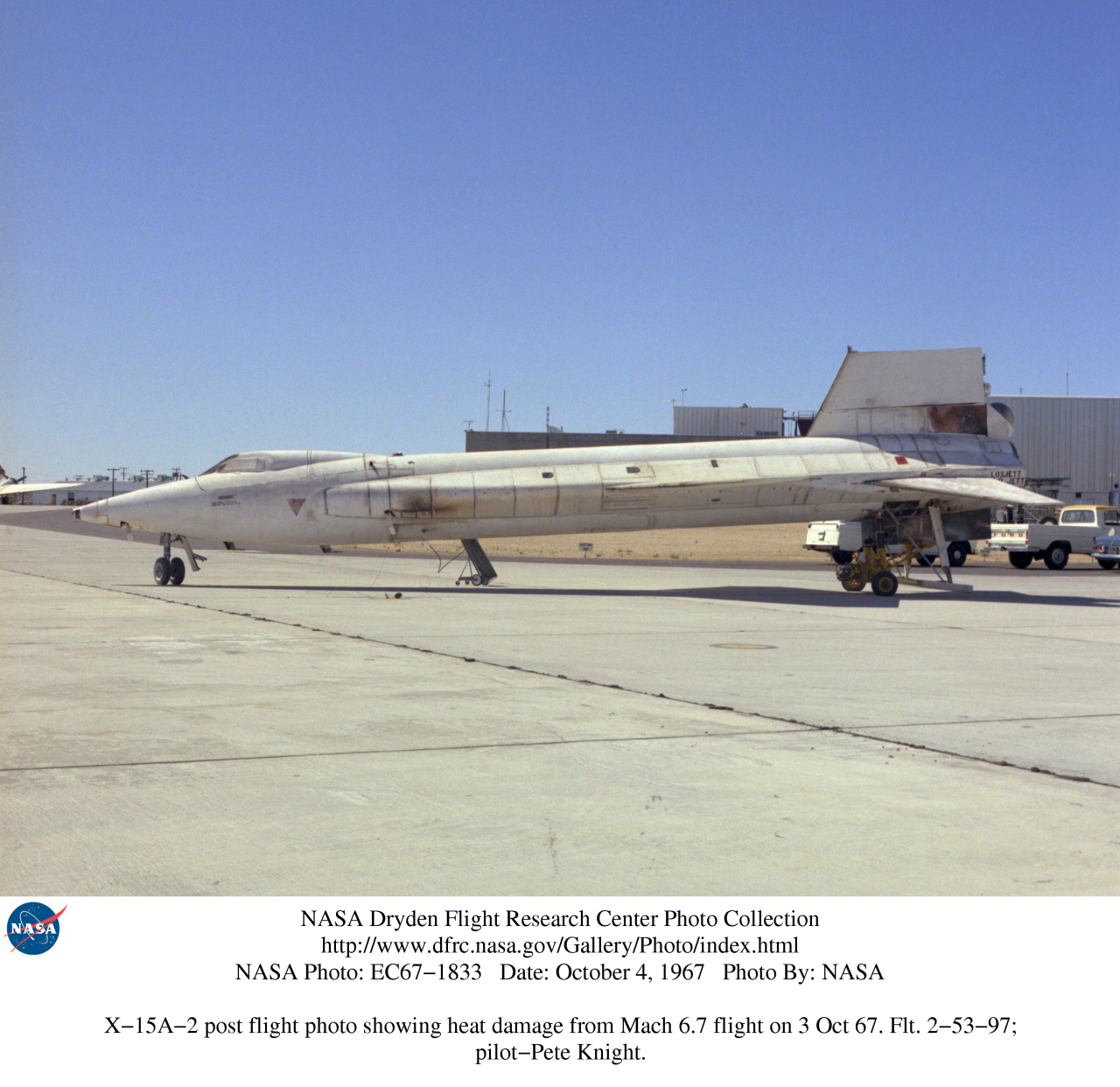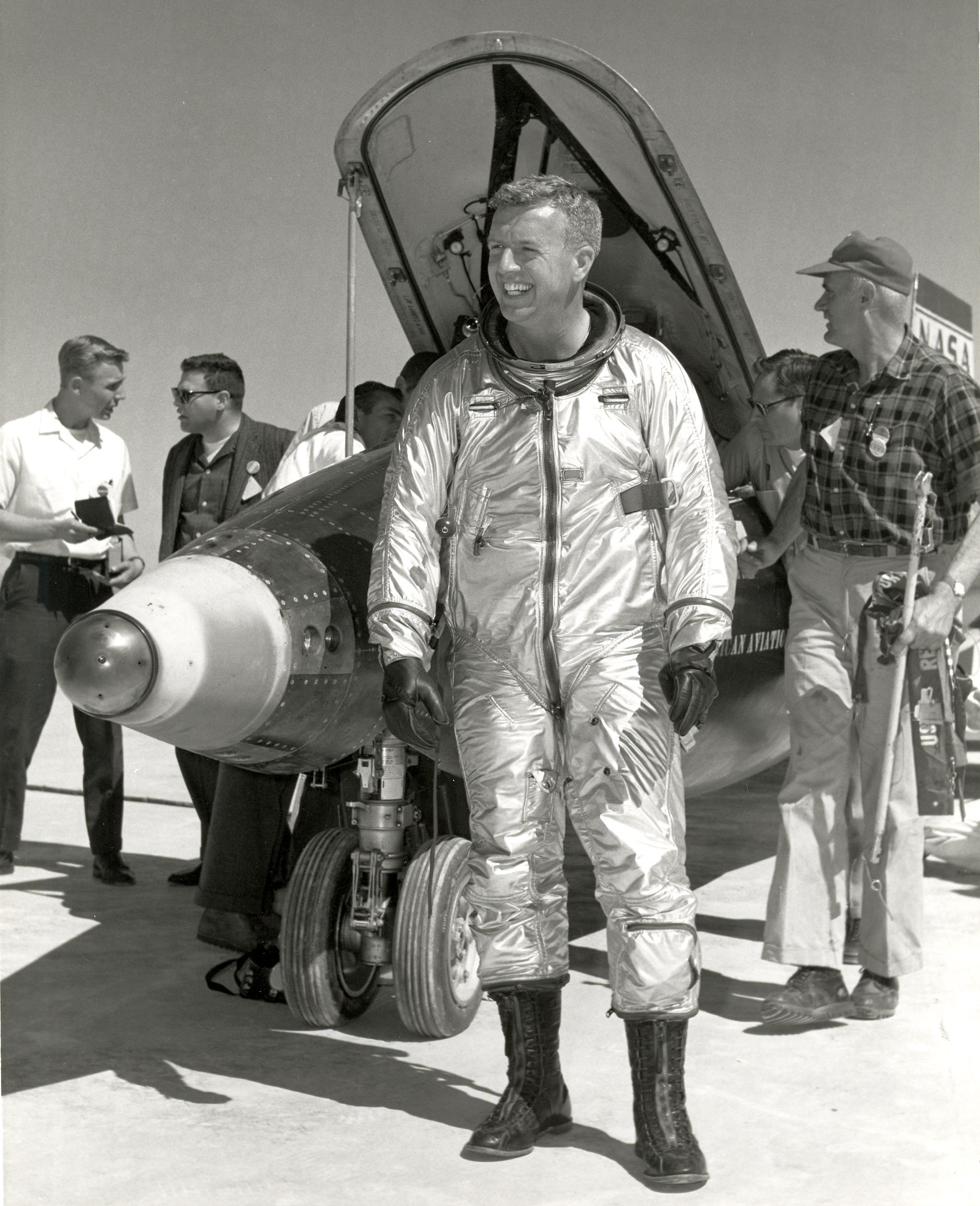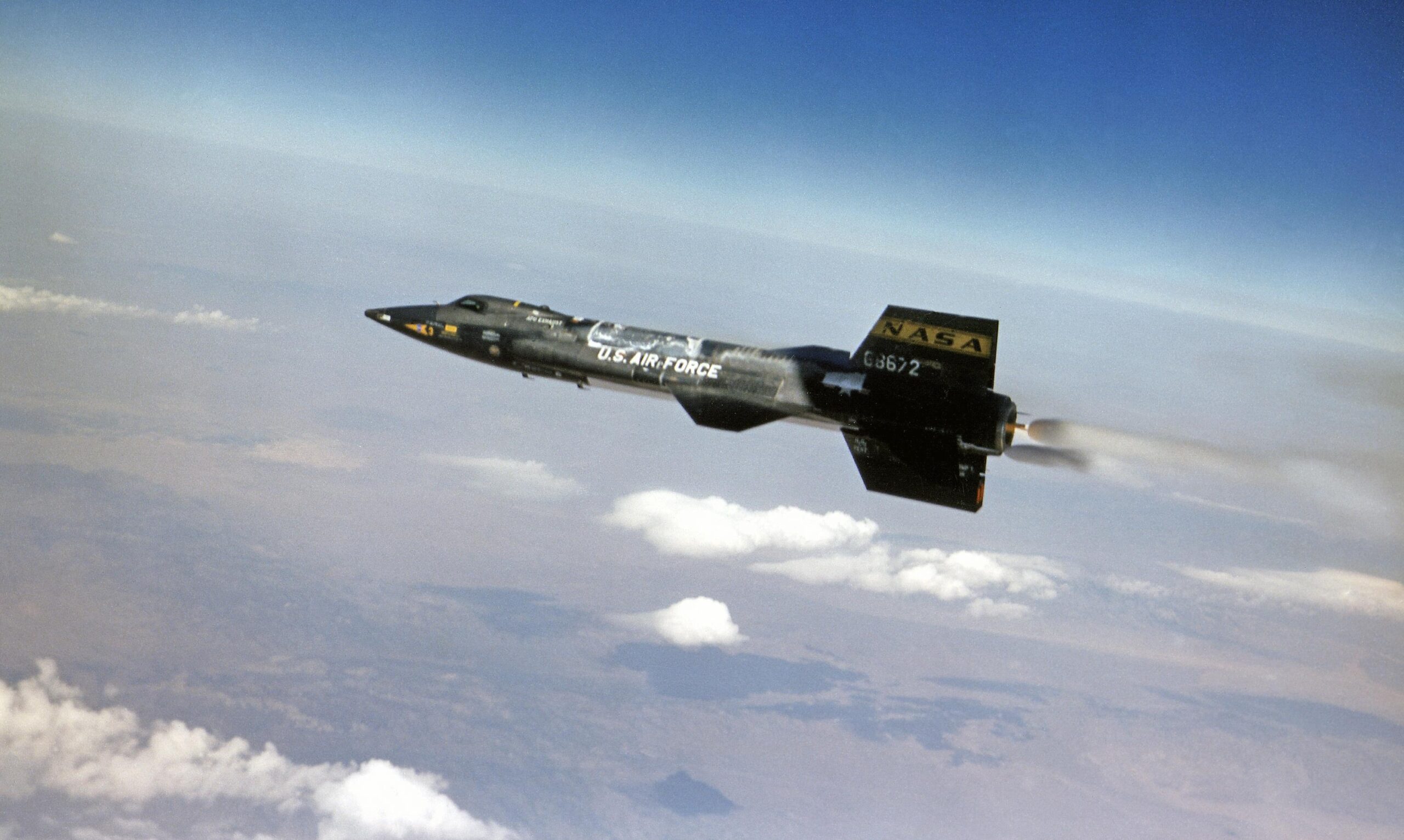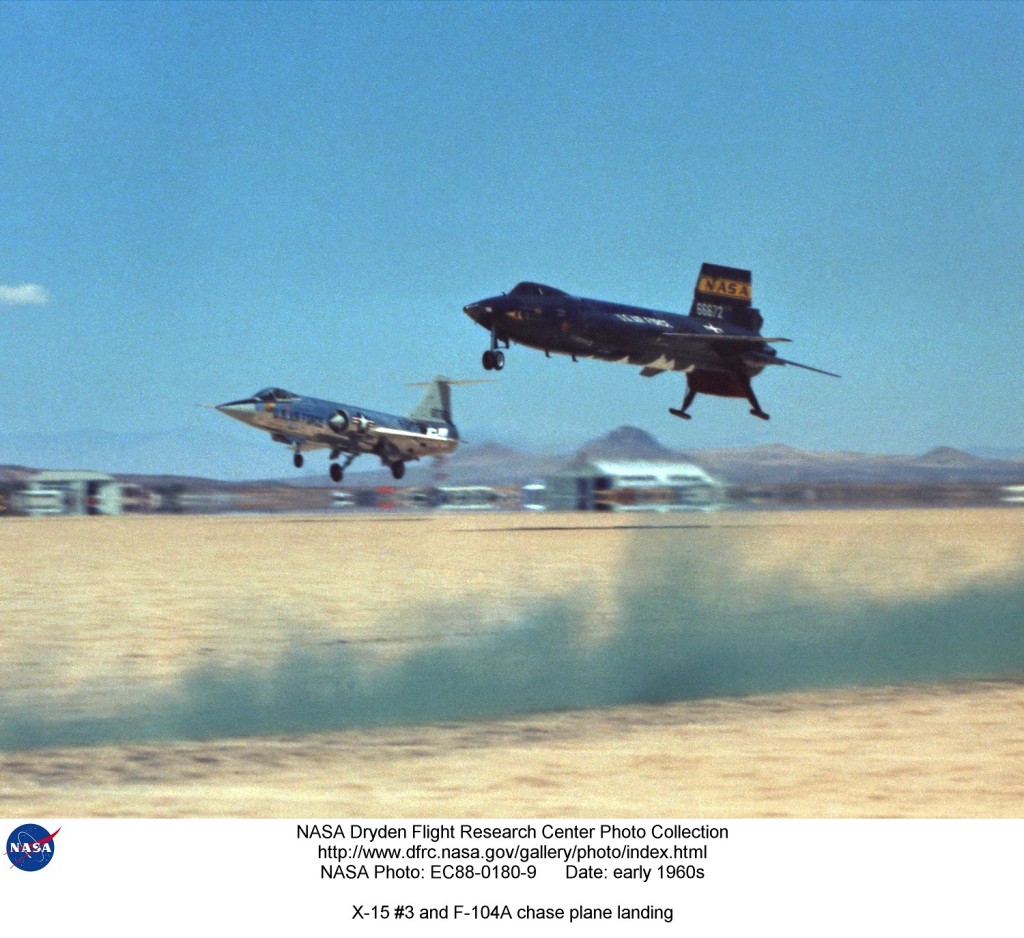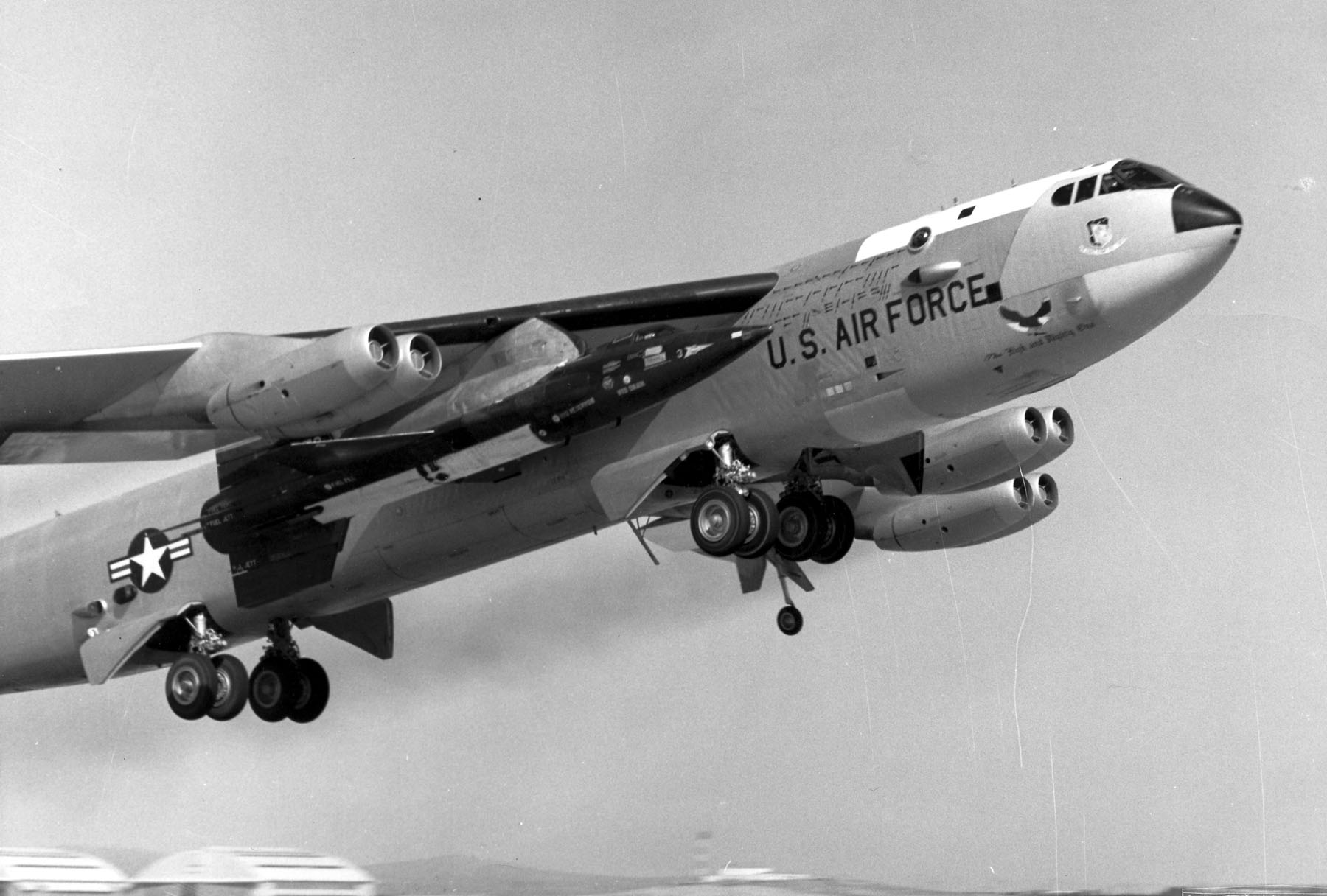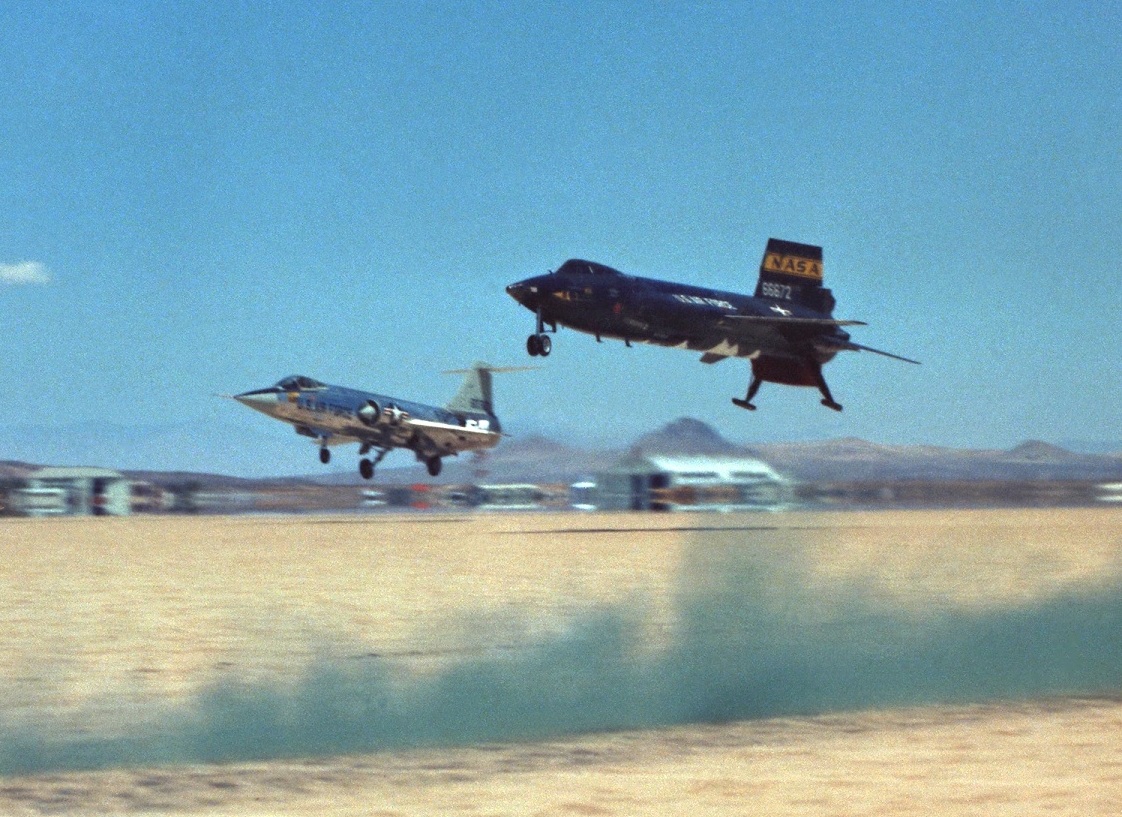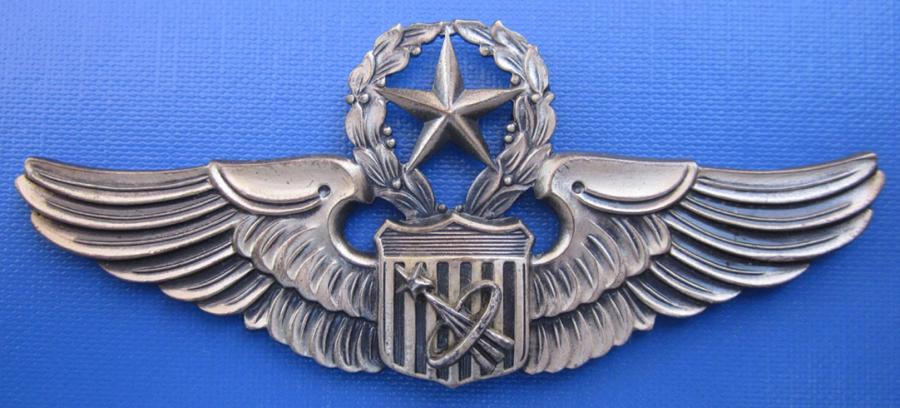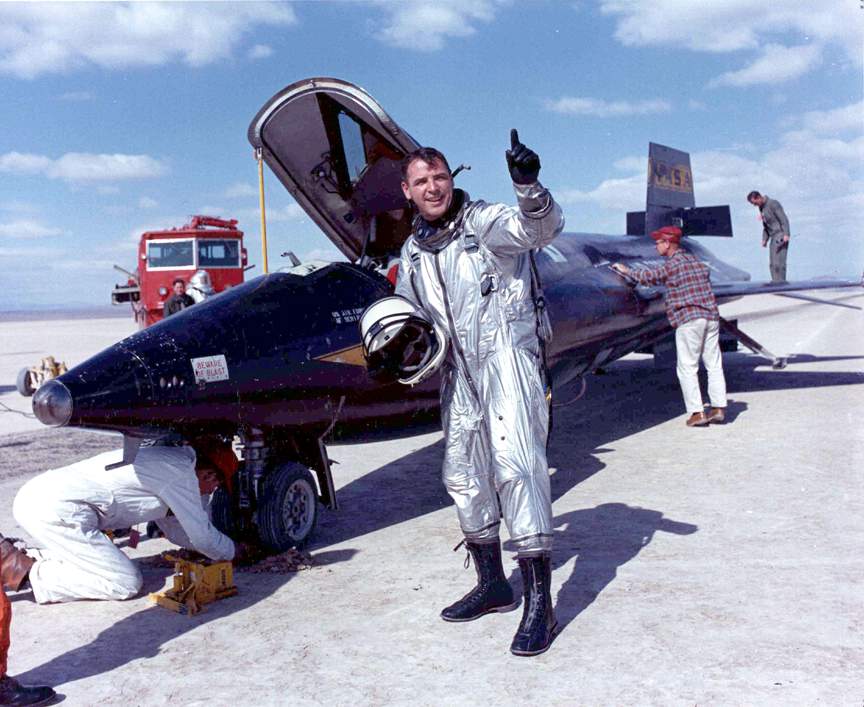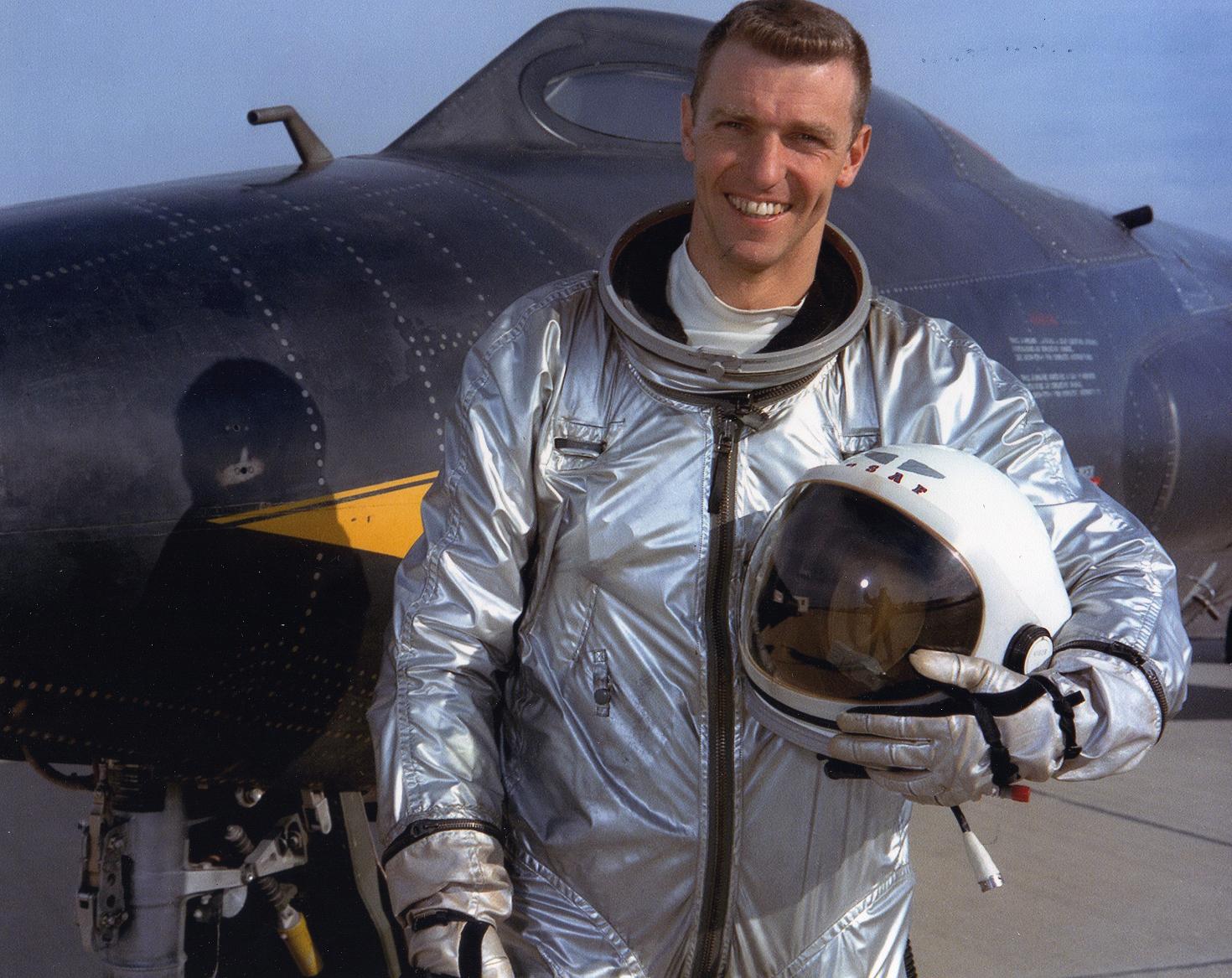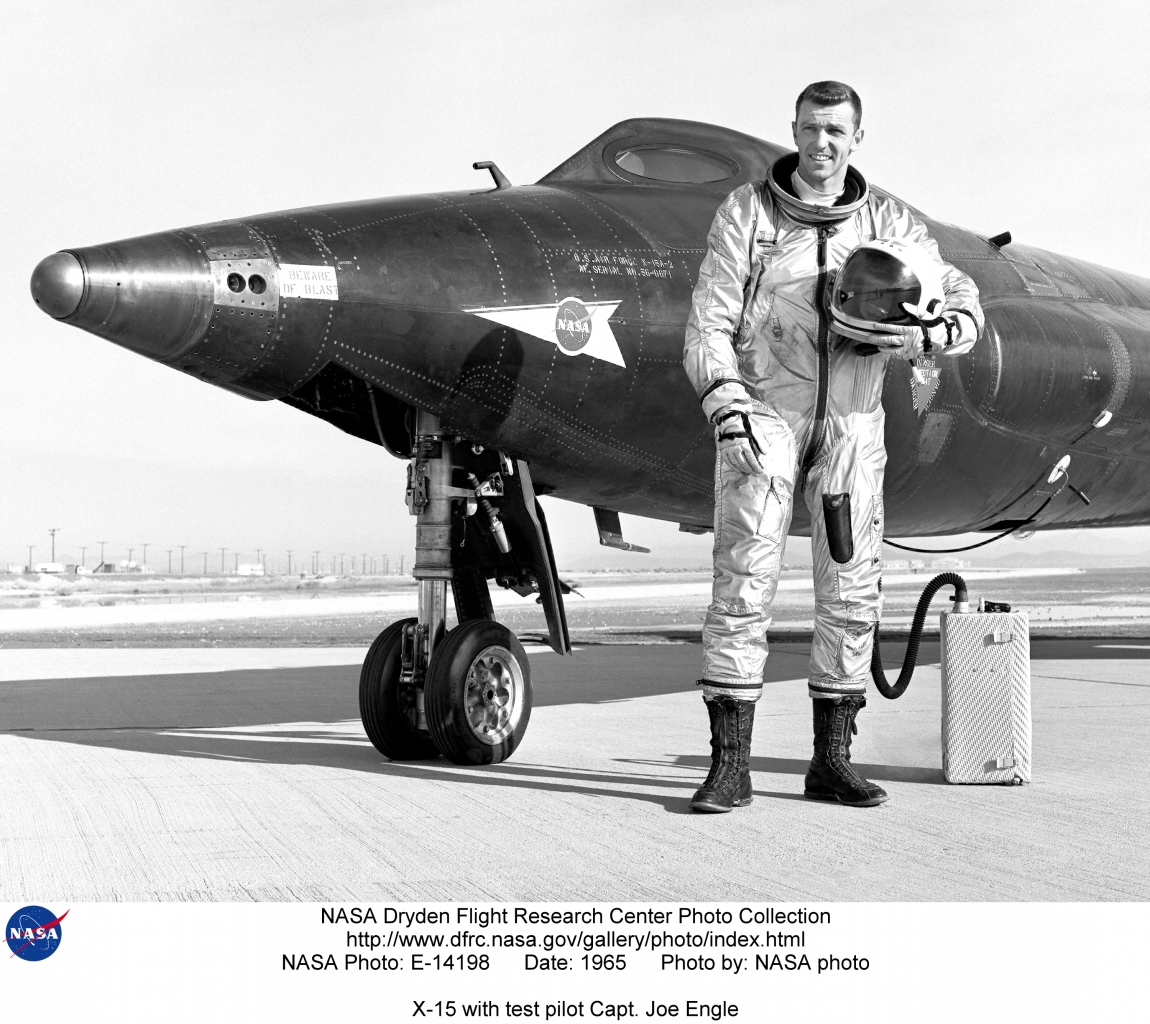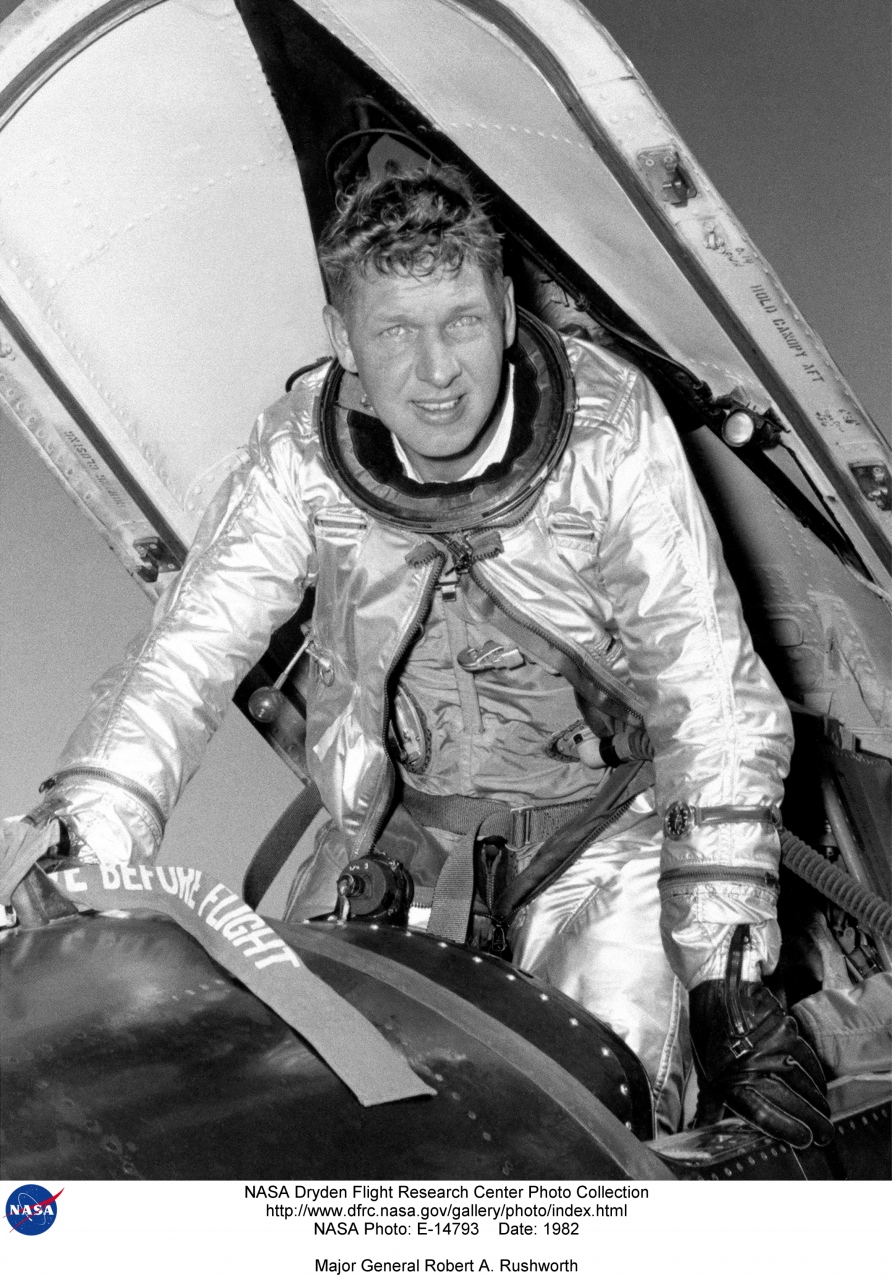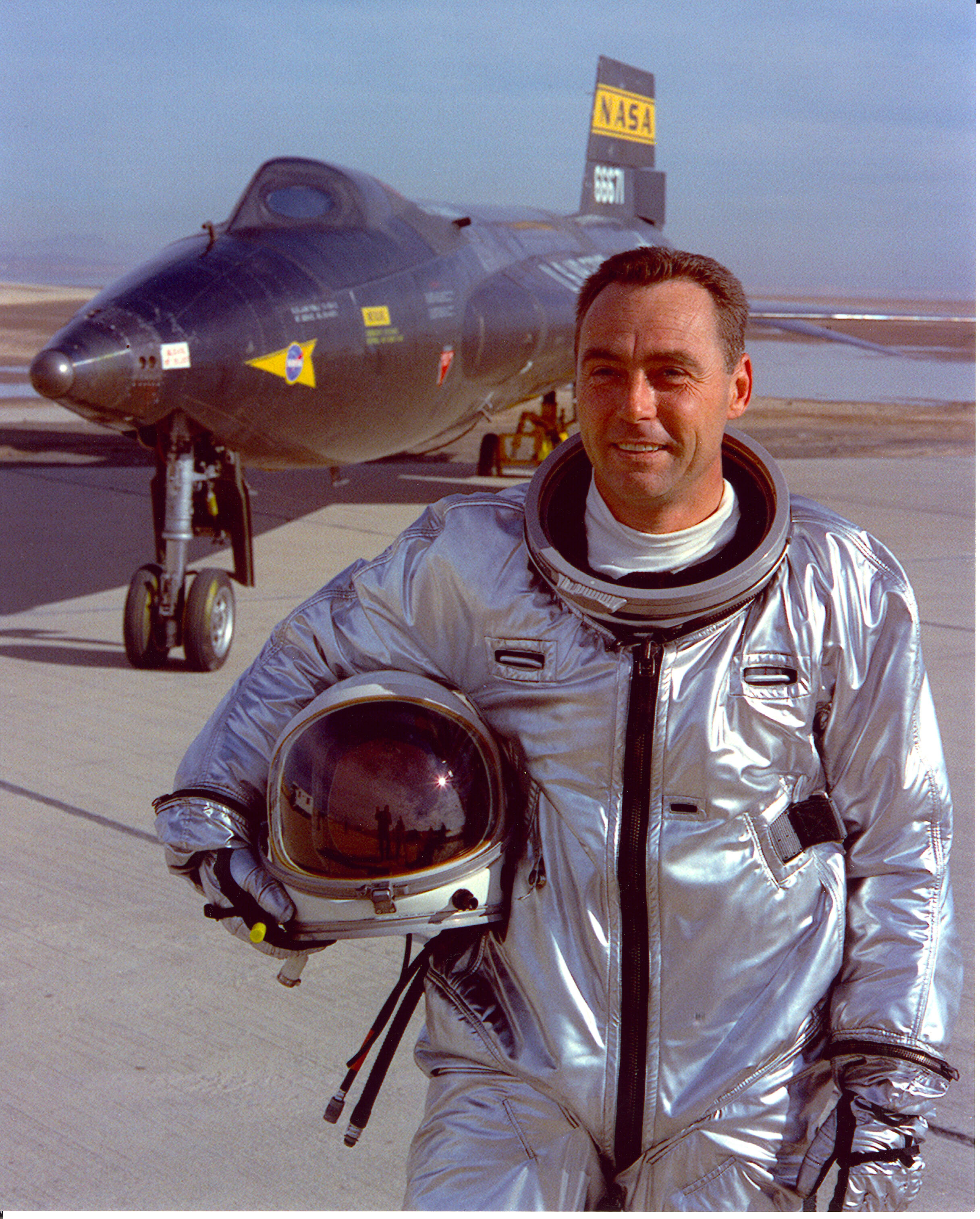
3 October 1967: The 188th flight of the X-15 Program was the 53rd for the Number 2 aircraft, 56-6671. It had been extensively modified by North American Aviation to an X-15A-2 configuration following a landing accident which had occurred 9 November 1962. The fuselage was lengthened 28 inches (0.711 meters) to accommodate a liquid hydrogen fuel tank for a scramjet engine that would be added to the ventral fin, a new tank for additional hydrogen peroxide to generate steam for the rocket engine turbo pump, and external propellant tanks to allow the rocketplane to reach higher speeds and altitudes. The entire surface of the X-15 was covered with an ablative coating to protect the metal structure from the extreme heat it would encounter on this flight.
Minor issues delayed the takeoff but finally, after they were corrected, and with Pete Knight in the X-15’s cockpit, it was carried aloft under the right wing of Balls 8, a Boeing NB-52B Stratofortress, 52-008.
At 45,000 feet (13,716 meters) over Mud Lake, Nevada, the X-15 was droppeded at 14:31:50.9 local time. Knight fired the Reaction Motors XLR99-RM-1 rocket engine and began to climb and accelerate. After 60 seconds, the ammonia and liquid oxygen propellants in the external tanks was exhausted, so the the tanks were jettisoned to eliminate their weight and aerodynamic drag.
The X-15A-2 climbed to 102,100 feet (31,120 meters) and Pete Knight leveled off, still accelerating. After 140.7 seconds of engine burn, Knight shut the XLR99 down. He noticed that thrust seemed to decrease gradually and the X-15 continued to accelerate to 6,630 feet per second (2,021 meters per second), or Mach 6.72.
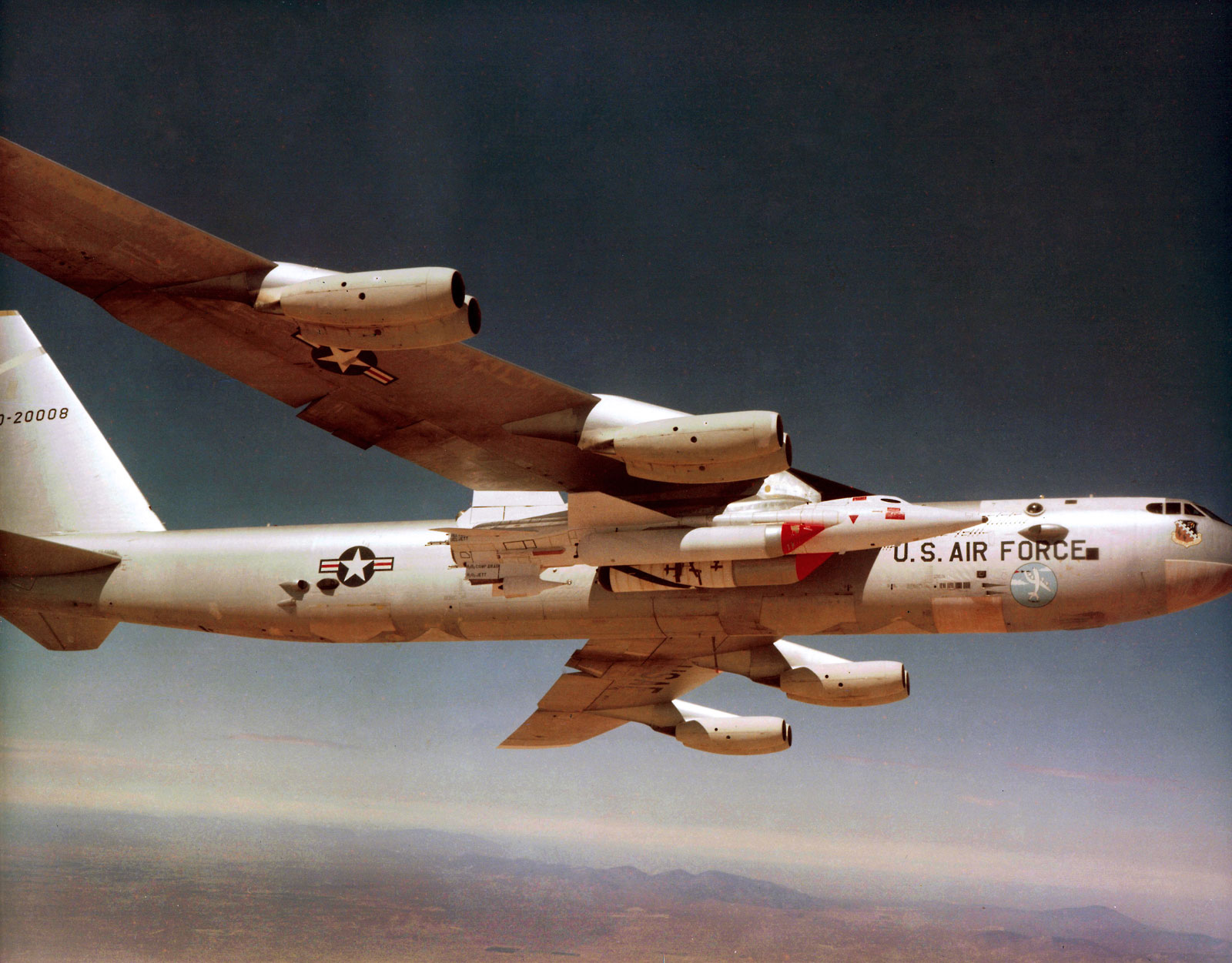
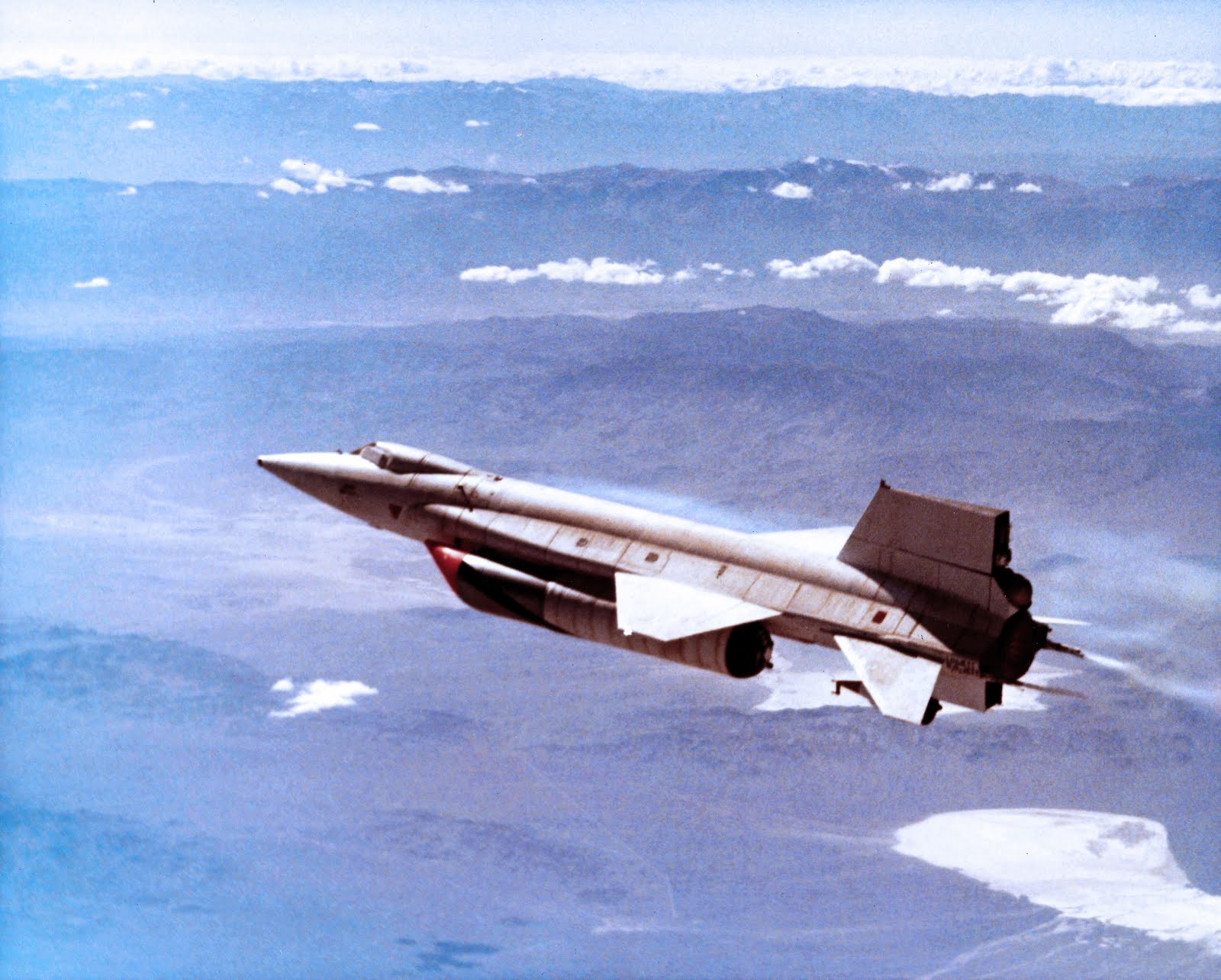
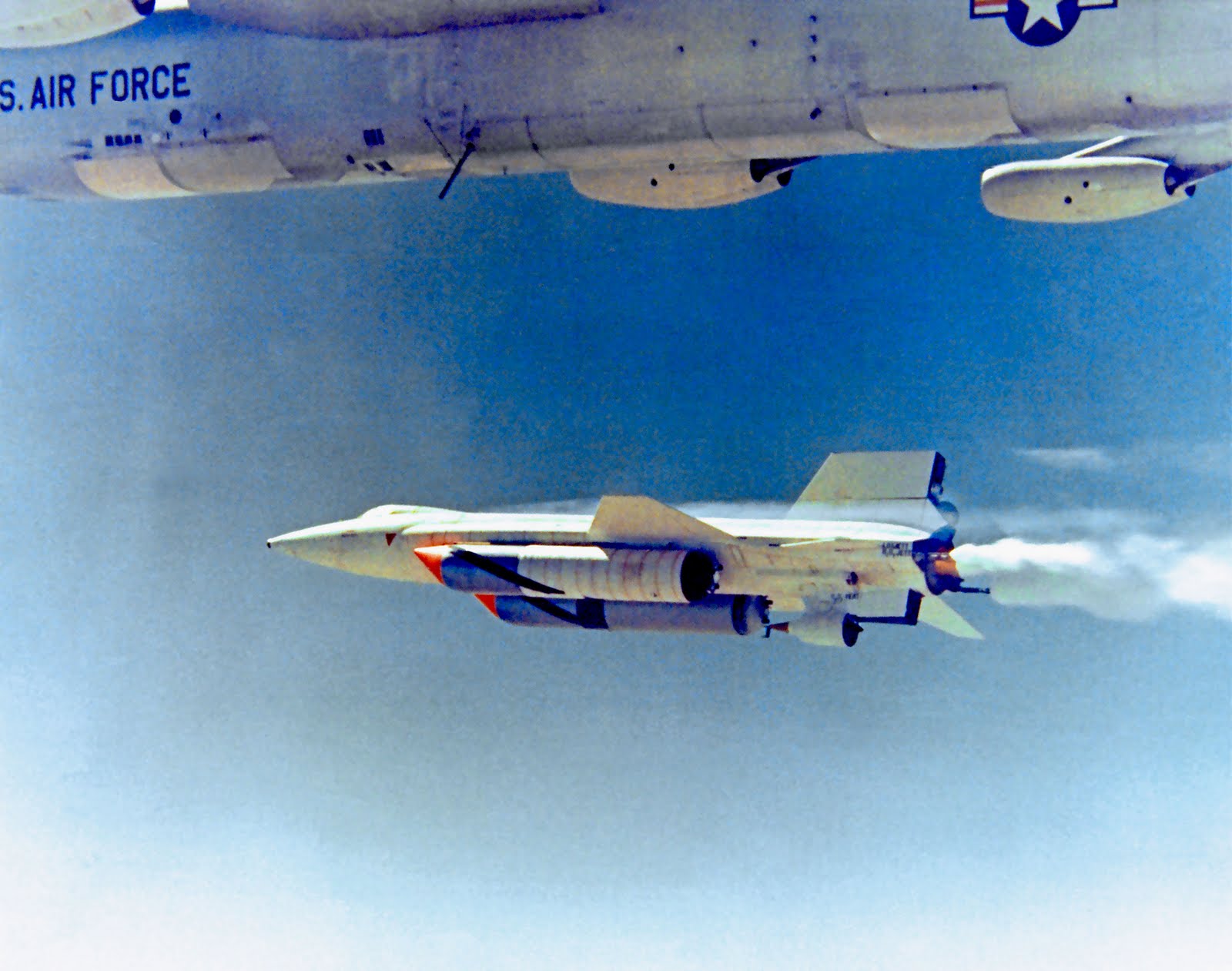
Shock waves from the dummy scramjet mounted on the ventral fin impinged on the fin’s leading edge and the lower fuselage, raising surface temperatures to 2,700 °F. (1,482 °C.) The Inconel X structure started to melt and burn through.
Pete Knight entered the high key over Rogers Dry Lake at 55,000 feet (16,764 meters) and Mach 2.2, higher and faster than normal. As he circled to line up for Runway One Eight, drag from the scramjet caused the X-15 to descend faster and this set him up for a perfect approach and landing. Because of heat damage, the scramjet broke loose and fell away from the X-15.
Knight touched down after an 8 minute, 17.0 second flight. His 4,520 mile per hour (7,274 kilometers per hour) maximum speed is a record that still stands.
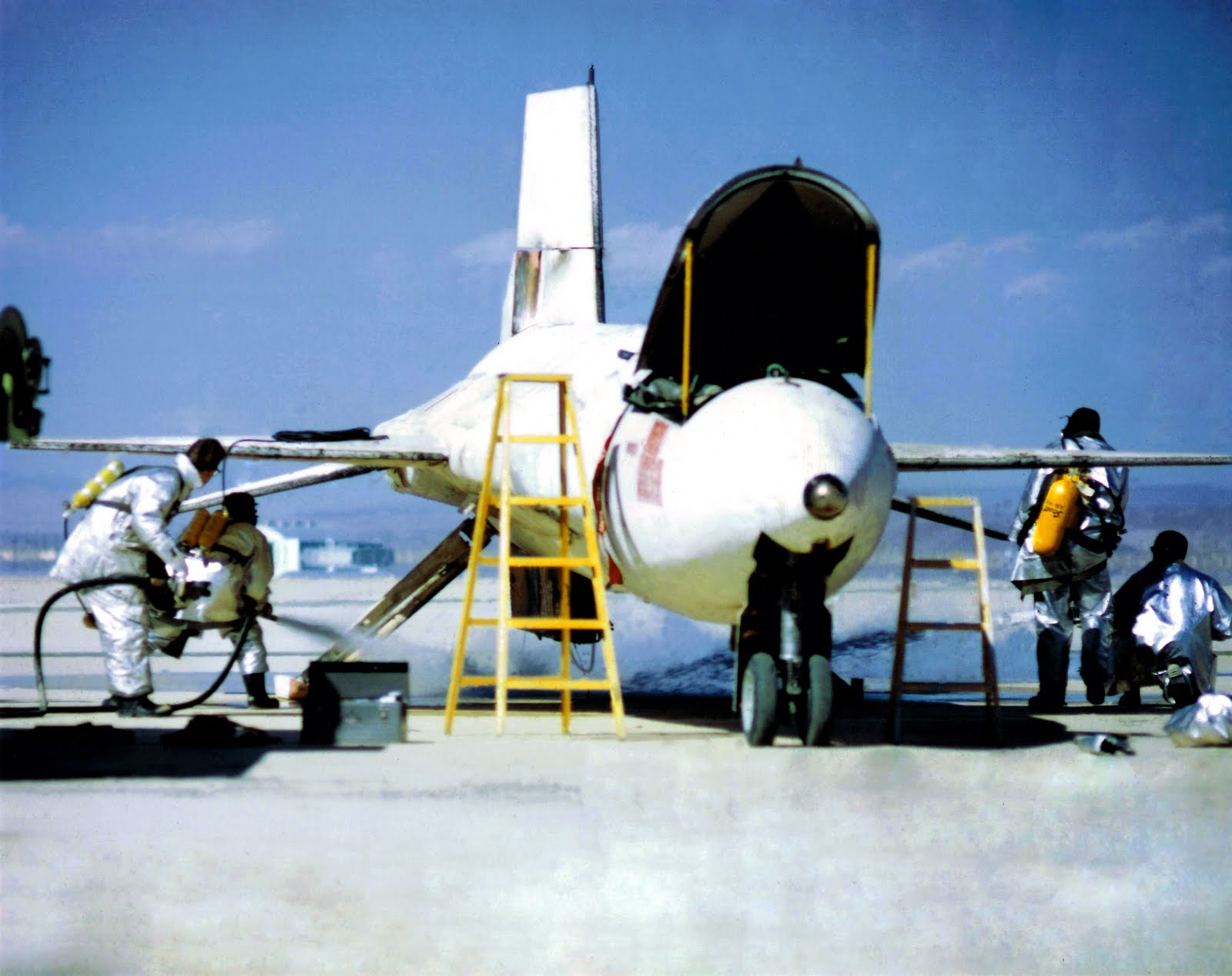
The X-15A-2 suffered considerable damage from this hypersonic flight. It was returned to North American for repairs, but before they were completed, the X-15 Program came to an end. This was 56-6671’s last flight. It was sent to the National Museum of the United States Air Force where it is part of the permanent collection.
In a ceremony at the White House, President Lyndon B. Johnson presented the Harmon International Trophy to Major William J. Knight.
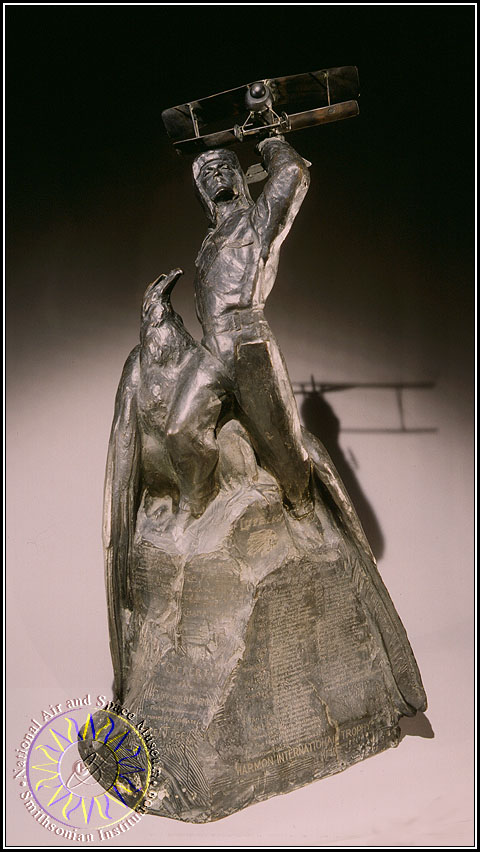
© 2016, Bryan R. Swopes
